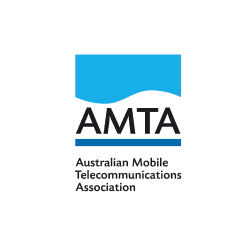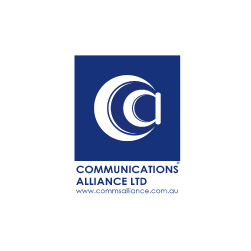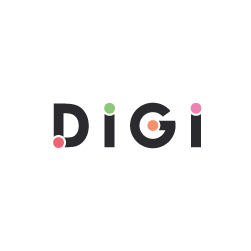Online
Safety Codes 2025
Under the Online Safety Act 2021 (Cth)., industry associations must develop codes of practice to protect Australians from certain types of material.
Industry associations have developed ‘phase two’ codes, covering Class 1C and Class 2 material. These codes are designed to protect children from exposure to online pornography and other harmful content.
In June 2025, the eSafety Commissioner announced the decision to register the codes related to ISP, hosting, and search engine services. On 9 September 2025, eSafety registered six codes which apply to app distribution platforms, social media services (core features), social media services (messaging features), equipment providers, relevant electronic services and designated internet services.
Background on
the Online Safety Codes
Under the Online Safety Act 2021, industry associations developed eight codes of practice to protect Australians from Class 1A and 1B content under Australia’s classification scheme and submitted those to the Office of the eSafety Commissioner with a request for registration.
Phase one of the industry codes was completed in 2023. On 16 June 2023, the eSafety Commissioner registered five of the industry-drafted codes for these sections of the online industry. On 12 September 2023, the Commissioner registered a sixth Code, which had been revised to reflect developments in generative AI.
These codes created stronger community protections for Australians in relation to materials such as child sexual exploitation material, pro-terror content, and extreme crime and violence. The Office of the eSafety Commissioner has made two additional industry standards for the sections of the industry covered in the codes that were declined for registration, i.e. relevant electronic services and designated internet services.
Phase two of the industry codes aims to protect Australian children from access or exposure to online pornography and other ‘class 2’ material, which is identified under the National Classification Scheme as being inappropriate for children. These draft codes are now open for public consultation.
Phase Two Codes
Australia’s Online Safety Act 2021, which came into effect in January 2022, requires the development of codes by industry associations to regulate certain types of online material. The second phase of draft industry codes have been designed to:
- Protect and prevent children in Australia from accessing or being exposed to class 1C and Class 2 material.
- Provide end-users in Australia with effective information, tools and options to limit access and exposure to class 1C and class 2 material.
In June 2025, the eSafety Commissioner has announced the decision to register the codes related to Search Engines, Hosting and ISP. On 9 September 2025, eSafety registered six codes which apply to app distribution platforms, social media services (core features), social media services (messaging features), equipment providers, relevant electronic services and designated internet services.
Phase One Codes
Phase one of the industry codes, under the Online Safety Act 2021, is now complete.
On 16 June 2023, the eSafety Commissioner registered five of the industry-drafted codes for these sections of the online industry. On 12 September 2023, the Commissioner registered a sixth Code, which had been revised to reflect developments in generative AI. Follow the button below to view the final codes.
About Us
In accordance with Part 9, Division 7, of the Online Safety Act, the eSafety Commissioner has asked industry associations to draft industry codes. The codes have been developed by a steering group of industry associations that represent the online industry, consisting of (in alphabetical order) BSA | the Software Alliance (BSA), the Australian Mobile Telecommunications Association (AMTA), Communications Alliance, the Consumer Electronics Suppliers Association (CESA), the Digital Industry Group Inc (DIGI), and the Interactive Games and Entertainment Association (IGEA).

Australian Mobile Telecommunications Association

Communications Alliance

Consumer Electronics Suppliers Association

Digital Industry Group Inc

Interactive Games and Entertainment Association
Frequently Asked Questions
What do codes achieve for consumers concerned about online safety?
Registered industry codes are enforceable under the Online Safety Act. In short, the phase one codes create improved standards across the entire online industry to address harmful Class 1 materials. The phase two codes provide greater safeguards around age-restricted material, such as online pornography.
What does 'Class 1A' and ‘Class 1B’ content mean?
Class 1A is any material which:
- promotes or provides instruction of paedophile activity (‘child sexual exploitation’),
- advocates the doing of a terrorist act, including terrorist manifestos (‘pro-terror’),
- describes, depicts, promotes, instructs or otherwise deals with matters of extreme crime, cruelty or violence (including sexual violence) without justification (for example, murder, suicide, torture and rape), (‘extreme crime and violence’).
Class 1B is any material which:
- describes, depicts, expresses or otherwise deals with matters of crime, cruelty or violence without justification (‘crime and violence’),
- promotes, incites or instructs in matters of crime or violence (‘crime and violence’),
- describes, depicts, promotes, instructs or otherwise deals with matters of drug misuse or addiction without justification (‘drug-related content’)
Industry has further developed and defined each subcategory with reference to the national classification scheme. Please see the Head Terms, including Annexure A, for further detail.
What does 'Class 1C' and ‘Class 2B’ content mean?
- Class 1C material is a subcategory of class 1 material that describes or depicts specific fetish practices or fantasies;
- Class 2A material is classified X 18+ under the Classification Act; or has not been classified, but if it were to be classified under the Classification Act, it would likely be classified X 18+, because it depicts actual (not simulated) sexual activity between consenting adults.
- This captures what is usually understood to be pornography.
- Class 2B material depicts high-impact sexually explicit material (including high impact nudity)
- Class 2C material describes or depicts high-impact violence and themes of crime and drug and alcohol dependency; but
- Class 2 content also includes self-harm material which encourages, promotes or provides instruction for
- Suicide
- Acts of deliberate self-injury; and/or
- An eating disorder or behaviour associated with an eating disorder.
- Class 2 material also includes simulated gambling material i.e a computer game that contains simulated gambling and is classified, or would be classified, R 18+ under the Classification Act.
How do I participate in the phase 2 codes consultation?
You can download the draft codes at the ‘class two codes’ page on this website. Submissions should be uploaded to the webform on this website and will be accepted until 11:59pm AEDT, November 22, 2024.
What happens after the phase 2 codes consultation period?
Once finalised, the Consolidated Industry Codes of Practice for the Online Industry (Class 1C and Class 2 Material) will be submitted with a request for registration to the eSafety Commissioner by December 19, 2024. Registered codes are enforceable by the Commissioner.
Is there anything else I should know about the draft codes?
In July 2024, the eSafety Commissioner requested that industry develop these codes with a deadline of December 19, 2024. The legal requirements that the codes would advance to the Online Safety Act 2021 are separate to the ongoing review of the Online Safety Act and recently proposed amendments to the Act in relation to age restrictions.
The draft codes must cover a wide range of participants that operate in the online environment, including providers of social media, messaging, search engine and app distribution services, as well as internet and hosting service providers, and manufacturers and suppliers of any equipment that connects to the internet, including smart devices and computers. It is important to note that they also cover operators of all websites that can be accessed by Australian users.
The draft codes released for consultation on 22 October have been significantly informed by input from eSafety; including through its July 2024 Position Paper, industry working groups, and expert consultation.